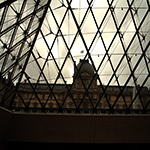Euroacademia Conferences
 Europe Inside-Out: Europe and Europeanness Exposed to Plural Observers (9th Edition) April 24 - 25, 2020
Europe Inside-Out: Europe and Europeanness Exposed to Plural Observers (9th Edition) April 24 - 25, 2020 Identities and Identifications: Politicized Uses of Collective Identities (9th Edition) June 12 - 13, 2020
Identities and Identifications: Politicized Uses of Collective Identities (9th Edition) June 12 - 13, 2020 8th Forum of Critical Studies: Asking Big Questions Again January 24 - 25, 2020
8th Forum of Critical Studies: Asking Big Questions Again January 24 - 25, 2020 Re-Inventing Eastern Europe (7th Edition) December 13 - 14, 2019
Re-Inventing Eastern Europe (7th Edition) December 13 - 14, 2019 The European Union and the Politicization of Europe (8th Edition) October 25 - 26, 2019
The European Union and the Politicization of Europe (8th Edition) October 25 - 26, 2019 Identities and Identifications: Politicized Uses of Collective Identities (8th Edition) June 28 - 29, 2019
Identities and Identifications: Politicized Uses of Collective Identities (8th Edition) June 28 - 29, 2019 The European Union and the Politicization of Europe (7th Edition) January 25 - 26, 2019
The European Union and the Politicization of Europe (7th Edition) January 25 - 26, 2019 7th Forum of Critical Studies: Asking Big Questions Again November 23 - 24, 2018
7th Forum of Critical Studies: Asking Big Questions Again November 23 - 24, 2018 Europe Inside-Out: Europe and Europeanness Exposed to Plural Observers (8th Edition) September 28 - 30, 2018
Europe Inside-Out: Europe and Europeanness Exposed to Plural Observers (8th Edition) September 28 - 30, 2018 Identities and Identifications: Politicized Uses of Collective Identities (7th Edition) June 14 - 15, 2018
Identities and Identifications: Politicized Uses of Collective Identities (7th Edition) June 14 - 15, 2018
Inbetween. Romania at the 1867 World Exposition
-
-

-
Presentation speakers
- Mara-Lisa Kinne, Graduate Centre for the Study of Culture, Justus-Liebig-Universität Giessen, Germany
Abstract:
Since their inception in 1851, world expositions did not only seek to showcase novelties in science, technology, and culture; they also staged miniature representations of the international community: in the 19th century, they served as global villages of nation states, if you will. Especially before other events of global reach emerged, these fairs provided a rare opportunity to address an international audience. For small countries with changing notions of their own identities – such as Balkan states seeking national unity and independence from the Ottoman Empire – this opportunity of self-staging was crucial: labeled as backward and little-noticed by Western audiences, they purposed to reposition themselves on the cultural map by means of their self-portrayal; their representation could emphasize similarities or bring out differences with the (former) sovereign, with neighboring countries or other states. As a case study, this paper examines Romania’s self-representation at the 1867 world exposition in Paris. In the course of its history, Romania, geographically located at a liminal space, has repeatedly struggled with its belonging to an Eastern or Western political and cultural sphere. Although the country, unified in 1861, was still working towards independence from Ottoman rule, Romania was granted the right to have a national pavilion at the 1867 fair, a first among the Balkan nations. Assigned with its design, archeologist Alexandru Odobescu commissioned a French architect, Ambroise Baudry, to build the pavilion, and in order to promote a Romanian “national style”, Odobescu resorted to the legendary Episcopal Church in Curtea de Argeş as a model for the design. Interestingly, however, French audiences still categorized the architecture as oriental. The paper explores what identity-defining intentions are attempted to be visibly conveyed in Romania’s self-representation, which difficulties arise in its reception between Western and Eastern gaze and how both are conditioned by the contemporary political context.
-
Related Presentations


















